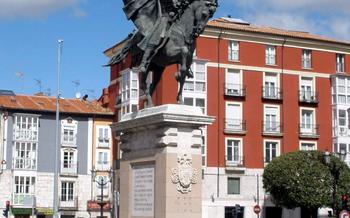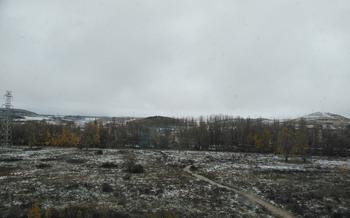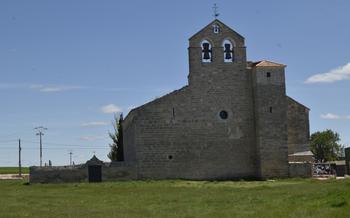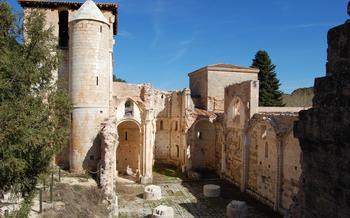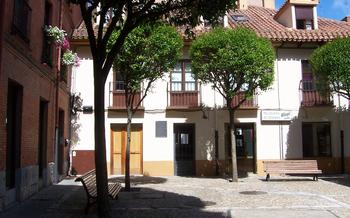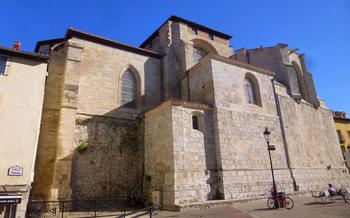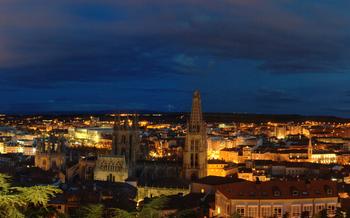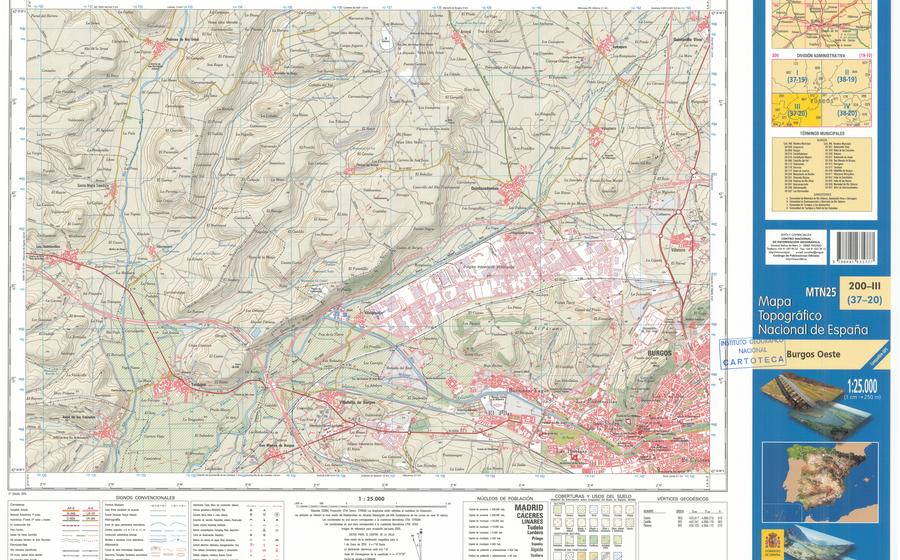
Revenga Neolithic Dolmen Complex
- The Revenga Neolithic Dolmen Complex: A Journey Through Time
- Unveiling the Secrets of the Dolmens
- Exploring the Dolmen Complex
- The Dolmens of Las Arnillas
- The Dolmens of Morenos
- Interpretive Center of the Revenga Dolmens: A Journey into the Past
- The Village of Revenga: A Cultural Gem
- Surrounding Natural Beauty
- Practical Tips for Visitors
- Transportation Options
- Accommodation Options
- Safety and Security
- Insider Tip: Hidden Gem
The Revenga Neolithic Dolmen Complex: A Journey Through Time
The Revenga Dolmen Complex is a remarkable collection of megalithic structures located in the village of Revenga, in the province of Burgos, Spain. These impressive dolmens, dating back to the Neolithic period (around 3000-2500 BCE), offer a glimpse into the lives and beliefs of our ancient ancestors. The complex consists of several groups of dolmens, each with its own unique characteristics and significance, providing visitors with a fascinating journey through time.
Situated in a picturesque landscape, the Revenga Dolmen Complex is easily accessible, making it a popular destination for history enthusiasts, archaeologists, and nature lovers alike. The dolmens stand as testaments to the ingenuity and craftsmanship of the Neolithic people, who erected these megalithic structures using simple tools and techniques. The complex holds immense cultural and historical value, shedding light on the social, economic, and religious practices of the region's early inhabitants.
Unveiling the Secrets of the Dolmens
The imposing dolmens of the Revenga complex showcase remarkable architectural prowess for their time. Built using large stone slabs, these megalithic structures exhibit a corbelled vault construction technique, where each layer of stones gradually overlaps the one below, creating a stable and enduring framework. The dolmens feature a main chamber, often preceded by a corridor or antechamber, and some even possess multiple chambers.
The purpose and symbolism of these dolmens remain a subject of fascination and debate among archaeologists and historians. While their primary function is widely believed to have been funerary, serving as collective burial chambers for Neolithic communities, they may have also held religious or ritualistic significance. The presence of engravings, carvings, and other decorative elements on some dolmens suggests that they were not merely utilitarian structures but held a deeper cultural and spiritual meaning for the Neolithic people.
Archaeological excavations and findings within the Revenga dolmens have shed light on the lives and customs of the Neolithic inhabitants. Discoveries of human remains, grave goods, and pottery fragments have provided valuable insights into their burial practices, social organization, and material culture. These findings have contributed to our understanding of the Neolithic period in Spain, offering glimpses into the beliefs, rituals, and daily lives of these ancient communities.
Exploring the Dolmen Complex
The Revenga Neolithic Dolmen Complex is a fascinating place to explore, offering a glimpse into the lives of the people who lived in this region thousands of years ago. The complex consists of several dolmens, each with its own unique characteristics and significance.
The largest and most impressive dolmen is the Cueva de la Mora, which measures over 20 meters in length and 7 meters in height. This dolmen is believed to have been used as a burial chamber, and it contains the remains of several individuals. Other dolmens in the complex include the dolmens of Las Arnillas and the dolmens of Morenos. These dolmens are smaller in size than the Cueva de la Mora, but they are still impressive structures that offer a glimpse into the past.
Visitors to the Revenga Neolithic Dolmen Complex can explore the site on their own or take a guided tour. Guided tours are available in Spanish and English, and they provide a wealth of information about the dolmens and the people who built them. Self-guided tours are also available, and there are several informative signs throughout the complex that provide information about the dolmens.
The Dolmens of Las Arnillas
The Las Arnillas dolmen group stands out with its distinctive features, primarily its smaller size compared to the imposing structures of La Cueva de la Mora. These dolmens are characterized by their circular or polygonal chambers, formed by several large stone slabs arranged in a vertical position. The roofing slabs, which once covered these chambers, are no longer present, leaving the interiors open to the sky.
The dolmens of Las Arnillas are of great archaeological significance, as they have yielded valuable insights into the Neolithic period in the region. Excavations have uncovered numerous artifacts, including pottery, stone tools, and human remains, providing clues about the daily lives and rituals of the ancient inhabitants.
These dolmens are closely connected to other Neolithic sites in the region, suggesting the existence of a broader network of settlements and cultural exchange. The similarities in architectural style and burial practices indicate that the communities that built these monuments shared common beliefs and traditions.
Exploring the Las Arnillas dolmen group offers visitors a glimpse into the rich cultural heritage of the Neolithic period in Spain. The smaller size of these dolmens allows for a more intimate and personal experience, enabling visitors to appreciate the intricate construction techniques and imagine the lives of the people who once used these sacred spaces.
The Dolmens of Morenos
Slightly removed from the main complex, the Dolmens of Morenos offer a tranquil and serene ambiance amidst nature's embrace. While smaller in size compared to their counterparts, these dolmens are no less significant in terms of their historical and cultural value. Situated in a picturesque setting, the dolmens are surrounded by rolling hills, vineyards, and olive groves, creating a harmonious blend of ancient history and natural beauty.
The dolmens here exhibit unique architectural features, showcasing the ingenuity and craftsmanship of the Neolithic builders. Smaller in size but equally intricate in construction, they provide valuable insights into the lives and beliefs of the ancient people who inhabited this region. The dolmens of Morenos serve as a testament to the enduring legacy of the Neolithic period in Spain, inviting visitors to explore and appreciate the rich cultural heritage that lies hidden within these ancient monuments.
Despite their smaller size, the Dolmens of Morenos have yielded significant archaeological findings, providing valuable clues about the lives and practices of the Neolithic people. Excavations have revealed a wealth of artifacts, including pottery, tools, and human remains, offering glimpses into the daily lives, funerary customs, and social structures of this ancient society. These discoveries contribute to our understanding of the complex cultural dynamics that shaped this region during the Neolithic period.
Interpretive Center of the Revenga Dolmens: A Journey into the Past
Located in the heart of the Revenga Dolmens Complex, the Interpretive Center serves as a gateway to understanding the significance of these ancient monuments. Through interactive exhibits, multimedia displays, and educational workshops, the center immerses visitors in the history, culture, and symbolism of the dolmens. Guided tours led by knowledgeable experts provide an in-depth exploration of the complex, unraveling the mysteries and stories hidden within these megalithic structures. Whether you're a history enthusiast, an archaeology buff, or simply curious about the past, the Interpretive Center offers a rich and rewarding experience, enhancing your visit to the Revenga Dolmens Complex.
The Village of Revenga: A Cultural Gem
Nestled amidst the scenic landscapes of Castile and León, the village of Revenga boasts a rich history and cultural heritage that seamlessly blends with the allure of the Revenga Neolithic Dolmen Complex. Its origins can be traced back to the Middle Ages when it was a strategic stronghold for the control of the region. Revenga exudes an old-world charm with its narrow cobbled streets, traditional stone houses, and a beautifully preserved village square.
One of the highlights of Revenga is its vibrant cultural scene. Throughout the year, the village hosts traditional festivals that showcase the local way of life. These celebrations are a testament to the deep-rooted customs and traditions of the region. Don't miss the opportunity to immerse yourself in the lively atmosphere, witness traditional dances, savor local delicacies, and interact with the welcoming locals.
Revenga's architectural heritage is another captivating aspect. The village church, dedicated to Santa María Magdalena, is a beautiful example of Romanesque architecture. Its sturdy stone structure and intricate carvings narrate tales of a bygone era. Take a leisurely stroll through the village, admiring the historic buildings and the well-preserved vernacular architecture that have stood the test of time.
When it comes to gastronomy, Revenga delights visitors with its traditional cuisine. Local restaurants and cafes serve up mouthwatering dishes that showcase the region's culinary traditions. Indulge in hearty stews, savor the flavors of grilled meats, and don't forget to try the local cheeses and wines. Revenga offers a true feast for the senses, where history, culture, and gastronomy intertwine to create an unforgettable experience.
Surrounding Natural Beauty
The landscape surrounding the Revenga Neolithic Dolmen Complex is a testament to the region's rich natural heritage. Rolling hills, lush forests, and sparkling rivers create a breathtaking backdrop for this ancient site. Visitors can embark on invigorating hikes along well-marked trails, immersing themselves in the tranquility of the natural surroundings.
For bird enthusiasts, the area offers a haven for observing a diverse array of species. The skies above the dolmens are alive with the songs of larks, goldfinches, and hoopoes, while the nearby wetlands attract a variety of waterfowl. Keen-eyed visitors may also spot elusive birds of prey, such as eagles and hawks, soaring majestically overhead.
The Revenga River, a lifeline for the local ecosystem, meanders through the landscape, adding to the charm of the region. Visitors can enjoy leisurely walks along the riverbanks, taking in the serene beauty of the surroundings. Whether you're an avid hiker, a passionate birdwatcher, or simply someone who appreciates the tranquility of nature, the Revenga Neolithic Dolmen Complex offers a unique blend of history and natural splendor.
Practical Tips for Visitors
To make the most of your visit to the Revenga Dolmen Complex and the village of Revenga, here are some practical tips to keep in mind:
-
Ideal time to visit: The best time to visit the dolmens and the village is during the spring or fall, when the weather is mild and pleasant. Summer months can be hot and crowded, while winter can be cold and wet.
-
Recommended duration: Allow at least half a day to explore the dolmen complex and the village. If you're interested in hiking or other outdoor activities, you may want to plan for a longer stay.
-
Accessibility: The dolmen complex and the village are generally accessible to visitors with disabilities. However, some of the paths and trails may be uneven or challenging to navigate.
-
Facilities and services: There are no restaurants or shops in the immediate vicinity of the dolmen complex. However, there are several options available in the village of Revenga, including bars, restaurants, and small shops.
Transportation Options
Getting to Revenga is a breeze, whether you prefer the freedom of your own car, the convenience of public transport, or the hassle-free experience of an organized tour.
If you're driving, simply follow the A-1 motorway and take the exit for Revenga. The dolmen complex is just a short distance from the village, and there's ample parking space available.
For those who prefer public transport, there are regular buses from Burgos to Revenga. The journey takes about an hour, and the bus stop is just a short walk from the dolmens.
If you're looking for a more immersive experience, consider joining an organized tour. These tours typically include transportation from Burgos, a guided visit to the dolmen complex, and other attractions in the area.
Once you're in Revenga, getting around is easy. The village is small and walkable, and there are also local buses that can take you to the dolmen complex and other points of interest.
Accommodation Options
Revenga offers a range of accommodation options to suit different budgets and preferences. For those seeking a traditional experience, there are several charming guesthouses and rural cottages that provide a glimpse into the local way of life. These accommodations often feature rustic décor, warm hospitality, and home-cooked meals prepared with fresh, local ingredients.
For a more modern and comfortable stay, there are a few small hotels and inns located near the dolmen complex. These establishments offer amenities such as private bathrooms, air conditioning, and Wi-Fi, ensuring a comfortable and convenient stay.
If you're traveling on a tight budget, there are several campsites in the surrounding area where you can pitch a tent or park your campervan. These campsites offer basic facilities such as showers, restrooms, and picnic areas, providing a cost-effective option for budget-conscious travelers.
When booking your accommodation, it's recommended to do so in advance, especially during peak tourist season. You can find availability and make reservations online or through local travel agencies.
Additionally, consider exploring nearby towns and villages for alternative accommodation options. The surrounding area is dotted with charming villages that offer a range of accommodations, from cozy bed and breakfasts to modern apartments.
Safety and Security
The Revenga Dolmen Complex and the surrounding area are generally safe for visitors. However, as with any travel destination, it's essential to exercise caution and follow basic safety measures. Keep your valuables secure, be aware of your surroundings, and avoid walking alone at night. Respect local customs and traditions, and dress appropriately when visiting religious or historical sites. In case of an emergency, contact the local authorities or seek assistance from your hotel or tour operator. Remember, respecting the local culture and environment is crucial for a harmonious and enjoyable visit.
Insider Tip: Hidden Gem
Beyond the main dolmen complex, there lies a hidden gem that often goes unnoticed by visitors. Just a short walk away, nestled amidst a tranquil olive grove, is the lesser-known Dolmen de San Vitores. This isolated dolmen offers a unique and intimate experience for history buffs seeking a more secluded exploration.
To reach the Dolmen de San Vitores, follow a narrow path that leads through the olive trees. As you approach, you'll be greeted by the imposing sight of this ancient monument, standing tall and silent amidst the serene landscape. Take your time to admire its architectural features and imagine the stories it could tell.
The Dolmen de San Vitores is not as well-preserved as the dolmens within the main complex, but its isolation and tranquility make it a special place to visit. It's an opportunity to connect with the past in a more personal way, away from the crowds.
So, if you have a thirst for exploration and a passion for history, be sure to seek out this hidden gem. The Dolmen de San Vitores awaits those who are willing to venture off the beaten path and discover its secrets.

